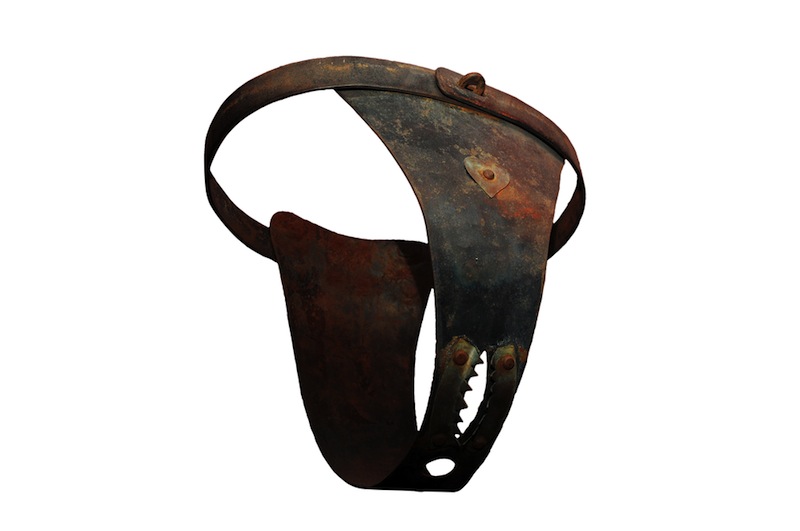What Are Chastity Belts, Really?

Chastity belts — devices that were reportedly worn by women in the Middle Ages to prevent sexual intercourse — are often referenced in popular culture as an extreme method of enforcing fidelity. But these belts are curiously missing from most legitimate medieval texts, which initially puzzled historians. So what are chastity belts, and did women really wear them?
According to curators at the Semmelweis Museum in Budapest, which displayed an exhibition on the history of the chastity belt in 2010, the belts were thought to be introduced as an answer to unchecked female promiscuity when knights left for battles, pilgrimages or religious crusades.
Albrecht Classen, author of "The Medieval Chastity Belt: A Myth-Making Process" (Palgrave Macmillan, 2007), told Time magazine that the devices were first mentioned in a treatise on siege machines written by Konrad Kyeser in 1405. According to Classen, Kyeser was a German engineer and artist, and the concept for the chastity belt appeared in the afterword of his treatise. Initially, they were described as an imaginative joke, but the belts went on to become a popular subject of satire. [Hot Stuff? 10 Unusual Sexual Fixations]
Academics began to question the authenticity of the devices when they could find no mention of chastity belts in any serious historical context.
"No author of sermon literature, of penitentiary texts, or didactic and legal writers has ever mentioned the chastity belt probably because already the basic idea behind it defies the basic needs of the human (female) body," Classen wrote.
Not only is there scarce historical evidence that chastity belts were an actual undergarment in the Middle Ages, but there is no logic to support their existence, either.
"How [could] these rough, hard objects be worn on the groin without causing deep and gradually more and more infected cuticular wounds within a few days?" experts at the Semmelweis Museum said.
Get the world’s most fascinating discoveries delivered straight to your inbox.
Lesley Smith, a late-16th century historian and curator for Tutbury Castle in the United Kingdom, agrees with Classen. In a 2007 article for the British Medical Journal, she wrote, "I have travelled abroad and looked at art collections and, as yet, havenꞌt seen a chastity belt that can be proved to be medieval in origin."
The inclination to believe the myth of the chastity belt is understandable, though. "In medieval Europe, any sexual activity that did not lead to conception was supposed to be forbidden," Smith said.
Classen likens the chastity-belt myth to another widely held (but similarly incorrect) belief: that medieval people thought the Earth was flat. In his book, Classen hypothesizes that this stems from a desire to demonstrate a lack of civility prior to the present age. Buying into the chastity- belt fantasy is a means of "conceptualizing a 'backward' and dark period prior to [our] own enlightened era," Sarah Bond, an assistant professor in the classics department at the University of Iowa, wrote in her popular blog post titled "Unlocking the Dark Ages: A Short History of Chastity Belts."
Ultimately, the chastity belt's existence as a legitimate historical artifact should be relegated to the category of myth, experts say. However, a recent tech innovation, designed to protect women from sexual assault, has been criticized as a modern reimagining of the chastity belt. AR Wear, "a clothing line offering wearable protection for when things go wrong," developed underwear and other garments that would be difficult, if not impossible, for an attacker to remove.
The controversial product, which was accused of placing the burden of rape prevention on victims rather than perpetrators, gained notoriety in 2013 after the company launched an Indiegogo crowdfunding campaign. AR Wear claimed the garment fabrics could not be ripped or cut, "so that women and girls can have more power to control the outcome of a sexual assault."
AR Wear reached their funding goal and finalized a prototype in 2015, but currently their products are not commercially available.
Original article on Live Science.


